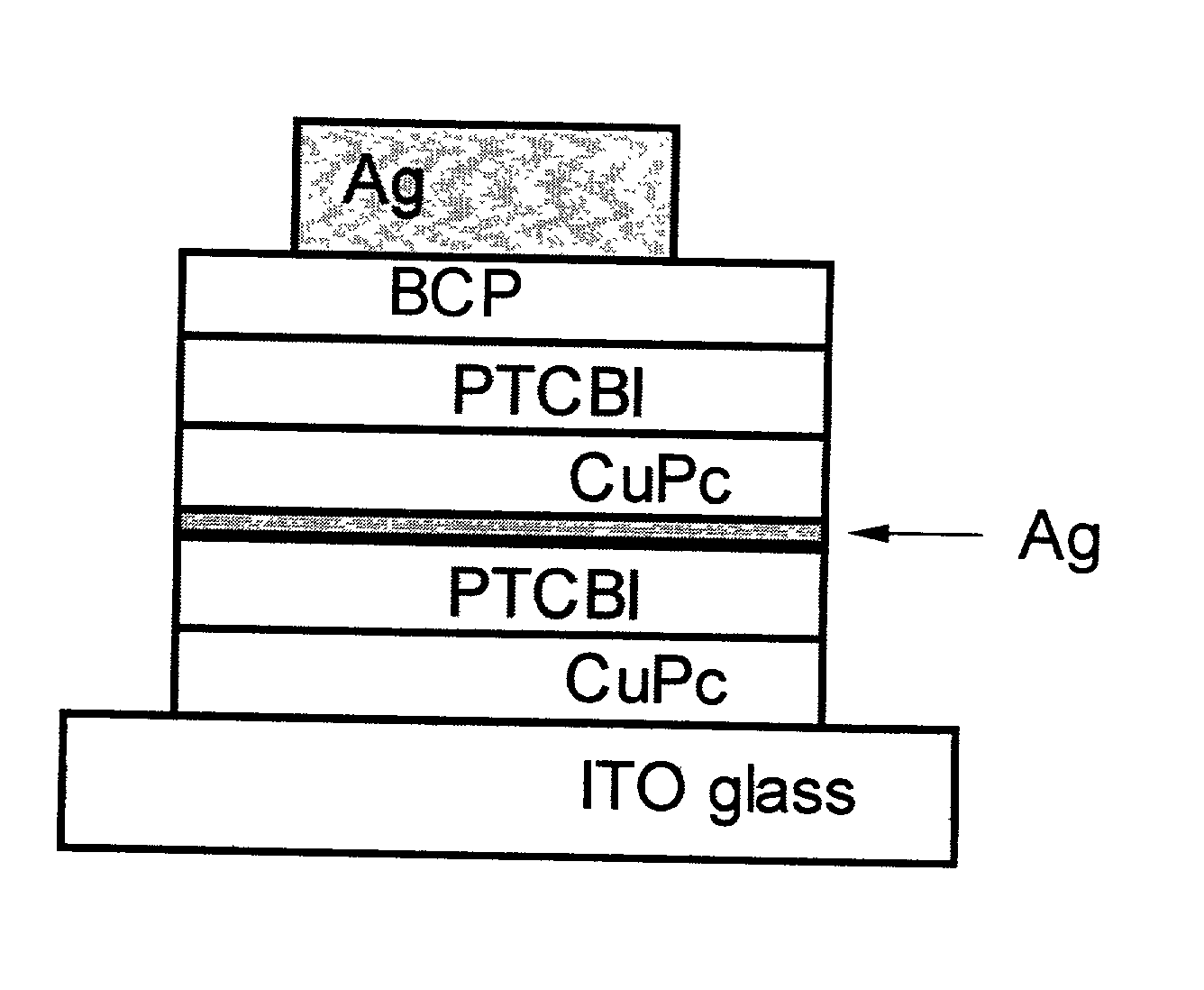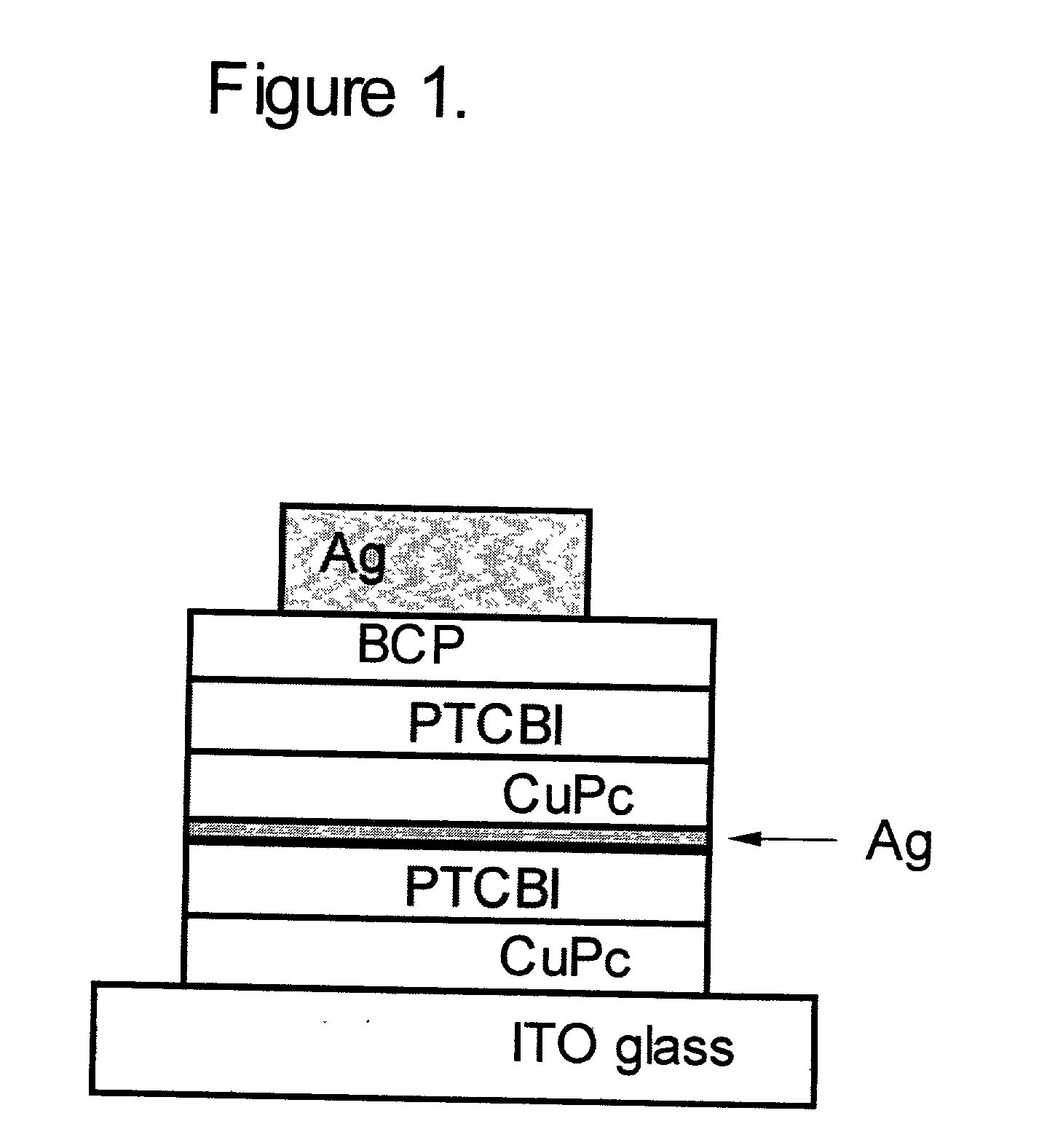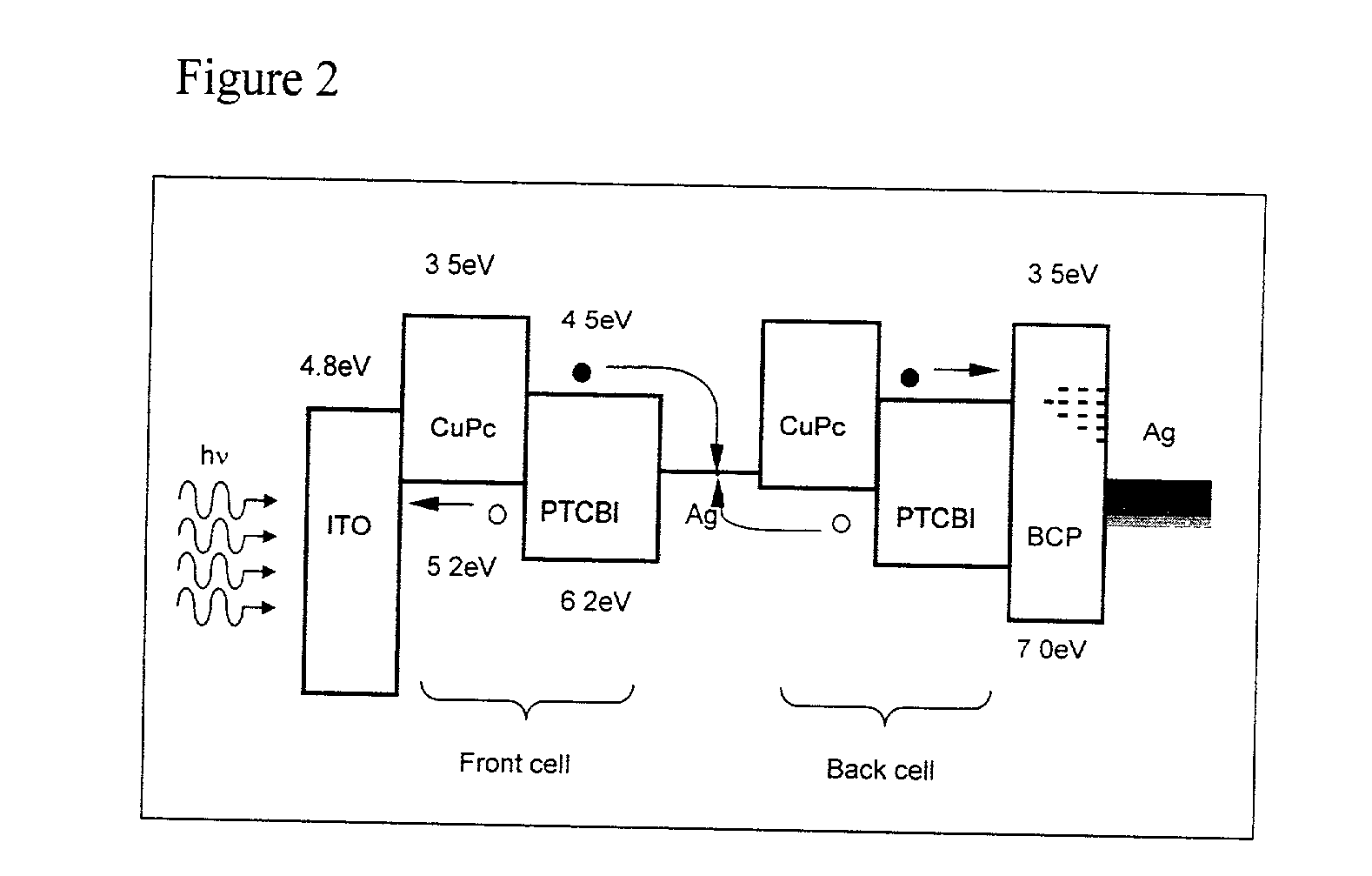Organic photovoltaic devices
- Summary
- Abstract
- Description
- Claims
- Application Information
AI Technical Summary
Benefits of technology
Problems solved by technology
Method used
Image
Examples
Embodiment Construction
[0062] Exemplary embodiments are fabricated on pre-cleaned ITO glass substrates, spin-coated with a 300 .ANG. thick layer of polyethylenedioxythiophene:poystyrenesulfonate (PEDOT). Spin coating is performed at 4000 rpm for 40 sec, and is followed by 30 min drying at 110.degree. C. for 1 hour at reduced pressure. The organic materials are purified by train sublimation. The PV cells are formed by thermal evaporation (room temperature, 10.sup.-6 Torr, deposition rate of 1.5-2 .ANG. / sec) of organic materials on the ITO / PEDOT glass in the following sequence: donor-acceptor-metal-donor-acceptor-metal. The thickness of individual layers is controlled by use of, for example, a crystal oscillator thickness monitor. Copper phthalocyanine, CuPc, is used as a donor, and perylenetetracarboxylic bis-benzimidazole (PTCBI) as an acceptor. Ag is used for the thin (.about.5-20 .ANG.) layer between the front and the back cells and as a top metal electrode material. The top electrode (of 800 .ANG. thic...
PUM
| Property | Measurement | Unit |
|---|---|---|
| Power conversion efficiency | aaaaa | aaaaa |
| Current | aaaaa | aaaaa |
| Transparency | aaaaa | aaaaa |
Abstract
Description
Claims
Application Information
 Login to View More
Login to View More - R&D
- Intellectual Property
- Life Sciences
- Materials
- Tech Scout
- Unparalleled Data Quality
- Higher Quality Content
- 60% Fewer Hallucinations
Browse by: Latest US Patents, China's latest patents, Technical Efficacy Thesaurus, Application Domain, Technology Topic, Popular Technical Reports.
© 2025 PatSnap. All rights reserved.Legal|Privacy policy|Modern Slavery Act Transparency Statement|Sitemap|About US| Contact US: help@patsnap.com



